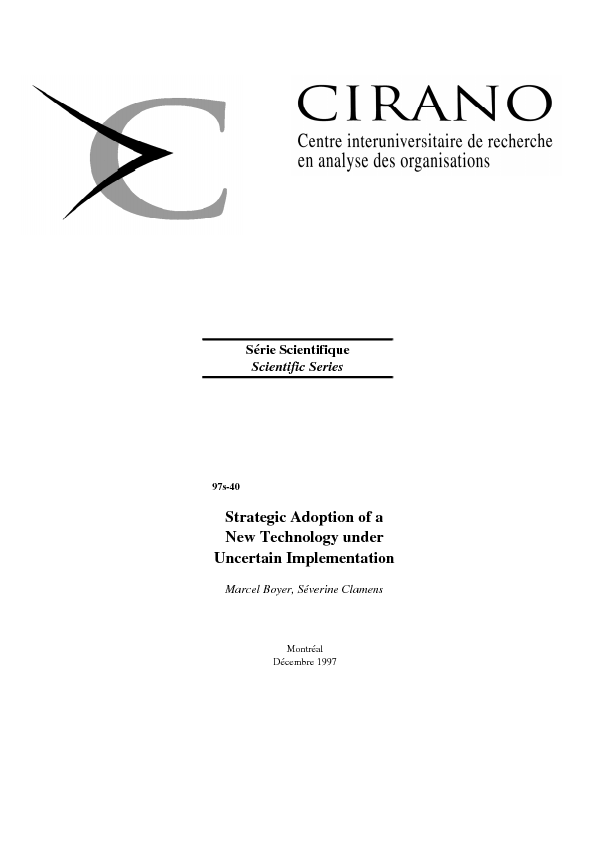Strategic Adoption of a New Technology under Uncertain Implementation
American corporations will spend some $50 billion US in 1997 on reengineering projets. It is believed that two thirds of these efforts will end up in failure because of significant resistance to change and a lack of concensus and commitment among senior executives. Very little effort has been exerted to foster our understanding of the strategic differences between adopting and implementing a new technology. Building on a model first proposed by Stenbacka and Tombak (1994), we show how the adoption timing decisions in a sequential duopoly structure are affected by more efficient implementation programs, higher relative gains of being the first (and second) to successfully implement the technology, and lower relative investment costs of adopting the new technology.
[ - ]




